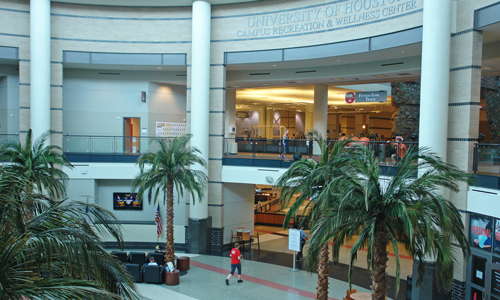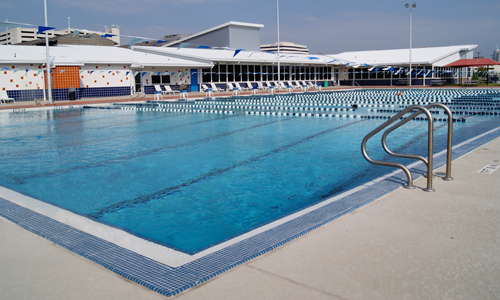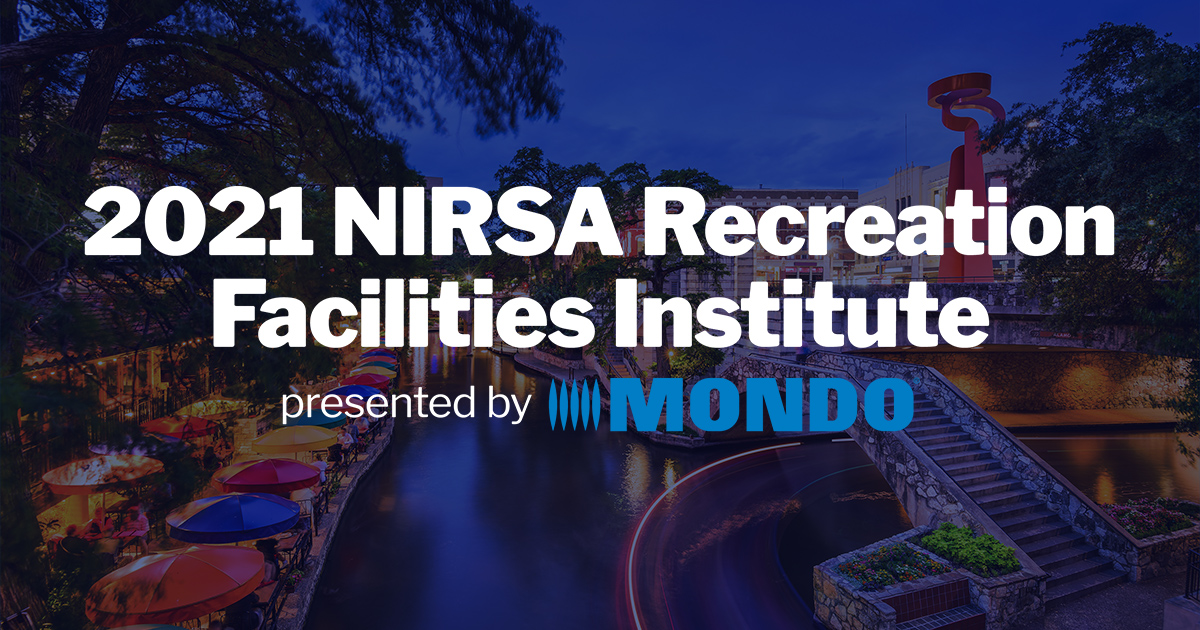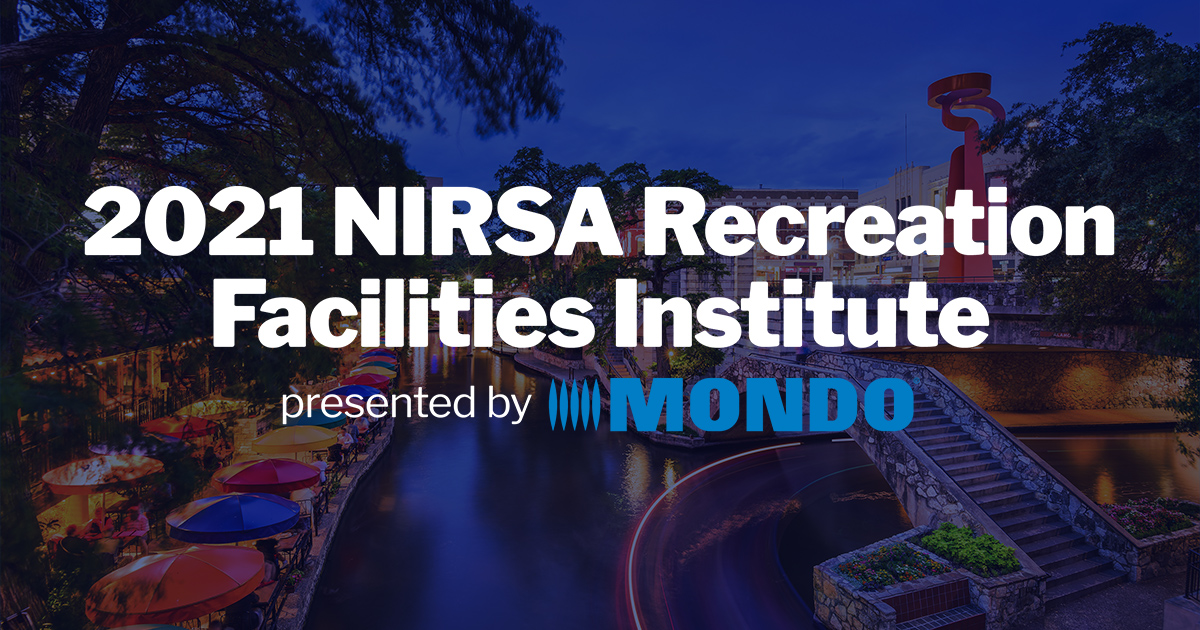By Bill Crockett, University of Maryland-Baltimore, Jeff Haug, University of Georgia, Brittany Rejda, NIRSA HQ, and Tina Villard, Rice University
The 2014 NIRSA Recreation Facilities Institute, presented by Mondo, will take place in Houston, Texas October 21-23. It will feature seven facility tours, a variety of educational sessions, and exploration of the “Built Communities” concept, which will provide the backbone of this year’s Facilities Institute program.
Facility tours
The Houston area is home to a number of universities and naturally the diversity in campuses is reflected in the wide variety of different campus recreation facilities. NIRSA has selected seven unique, state-of-the-art facilities that capture a range of solutions, designs, styles, finishes, and operational objectives for members to tour. This is a wonderful opportunity for facility professionals to learn about best practice operations and discover how campus culture sometimes dictates specific procedures.
 Recreation facilities exist to serve the campus community.
Recreation facilities exist to serve the campus community.Attendees who also register for this year’s Preconference Facility Tour will get to see facilities at Texas A&M University and Prairie View A&M University. Both are in the middle or final stages of construction projects, which will give attendees an opportunity to see facilities that are not yet fully open and operational.
The facilities on the tour represent $230 million and 1,000,000 square feet of space, and serve approximately 130,000 students.
 The indoor climbing wall at the University of Houston’s Campus Recreation and Wellness Center.
The indoor climbing wall at the University of Houston’s Campus Recreation and Wellness Center.Check out a few facts about the rec centers to be featured on the 2014 Facilities Institute tours:
Houston Baptist University features a meditation garden, foyer with skylight, indoor climbing wall, and a High Intensity Interval Training studio.
Prairie View A&M University (Preconference Tour—additional registration required) will include a dynamically-shaped cardio-equipment corridor once construction is complete.
 The courtyard of the Campus Recreation and Wellness Center at the University of Houston.
The courtyard of the Campus Recreation and Wellness Center at the University of Houston.Rice University has a dance theater equipped with full sound, track lighting, and blackout curtains.
Texas A&M University’s (Preconference Tour—additional registration required) Penberthy Rec Sports Complex, once construction is complete, will house four artificial turf fields and nine natural turf fields that can be set up for ultimate disc, rugby, or lacrosse.
Texas Southern University houses a state-of-the-art kinesiology lab and an AlterG Anti-Gravity Treadmill for rehabilitation.
 UTHealth’s outdoor Olympic-size pool.
UTHealth’s outdoor Olympic-size pool.University of Houston serves 3,500 visitors daily and features wide open spaces that allows users from all areas to see activity in other spaces.
University of Texas Health Science Center at Houston has an outdoor Olympic-size pool that is heated during the winter.
Educational sessions and roundtable discussions
Members who attend the 2014 Facilities Institute will get to network with other professionals from across North America who have not only operated collegiate recreation facilities, but worked with architects and contractors while overseeing an entire construction project. Attendees will also meet associate members, exhibitors, and content experts on facility design, planning, renovation, and operations.
 The 2014 Facilities Institute is an opportunity to talk to professionals who have first-hand experience with rec facility renovation.
The 2014 Facilities Institute is an opportunity to talk to professionals who have first-hand experience with rec facility renovation.Participants will learn how to develop a vision; explore who should be included in the planning process; and come to understand emerging trends in rec facilities. Real world dos and don’ts of planning and the challenges of construction will be discussed, and the pros and cons of new construction versus renovation—which will be taught through the lens of what is currently happening in the industry—will be compared. Other topics include facility expansions, efficient uses of spaces, and sustainability practices.
Built Communities
The goal of Built Communities is to look at recreation facilities as more than simply spaces to use for programming purposes. Instead, rec facilities should be vibrant learning spaces where students start establishing healthy lifelong behaviors while learning real-world skills as employees and participants.
Schools invest in recreation facilities because they recognize their enormous value. Not only are rec facilities important student recruiting tools, they also create places of community on campus and promote health and well-being. Rec facilities provide students with opportunities to interact with faculty, staff, and peers. They assist and support the student body, and enhance the student collegiate experience.
In adopting Built Communities, campuses make facilities and spaces less permanent and more functional. This allows them to offer more intentional services, programs, and opportunities. Built Communities promotes multiple departments collaborating on a strategic planning process, which ends up saving universities money and so helps facilities operate with diminishing resources.
Register today!
The 2014 NIRSA Recreation Facilities Institute is a wonderful opportunity for NIRSA members to attend education session and discussion roundtables focused on facility design, construction, or management operation—as well as to go on tours of seven of Houston’s top recreation facilities!
Early bird registration for the Institute closes on September 24, so make sure to register today!





